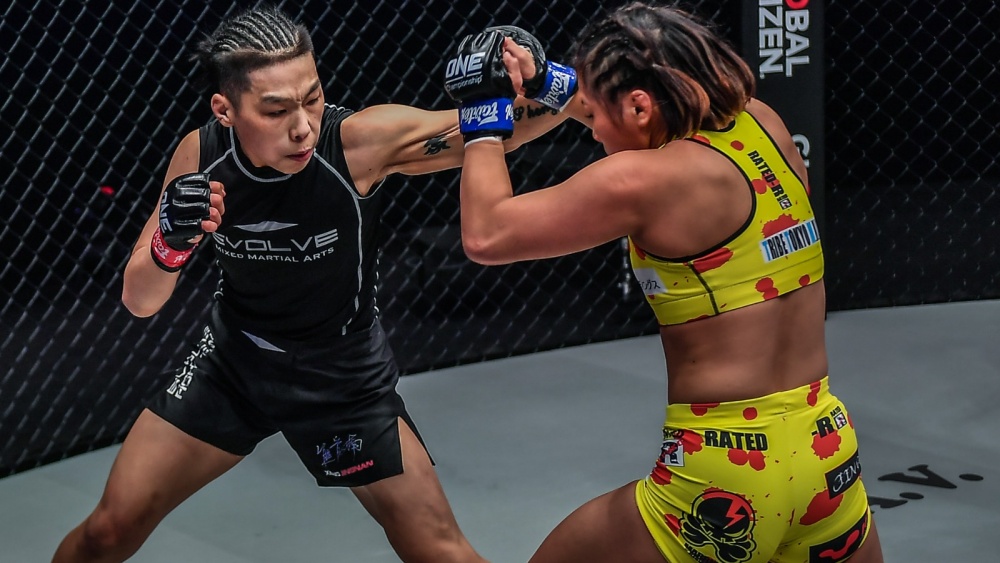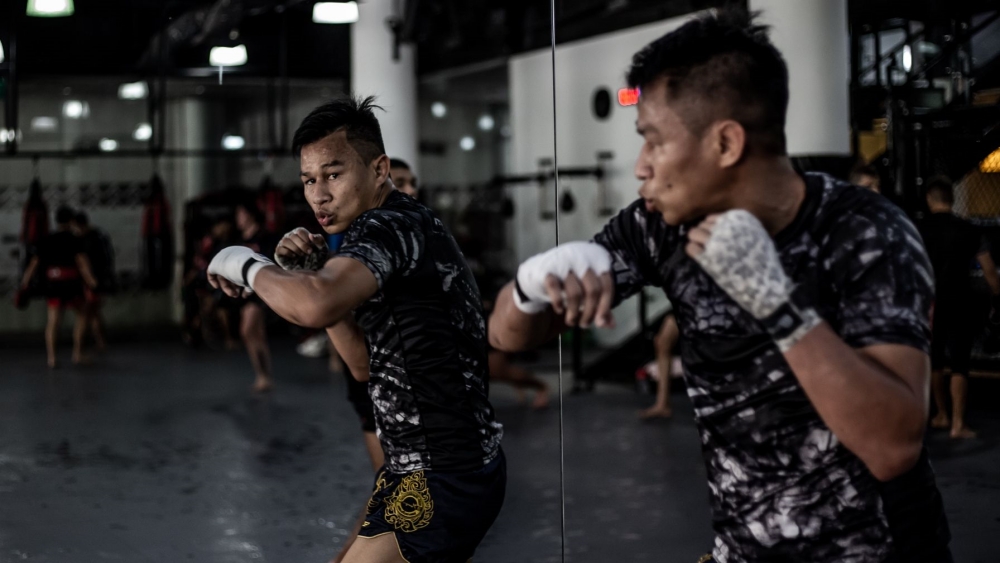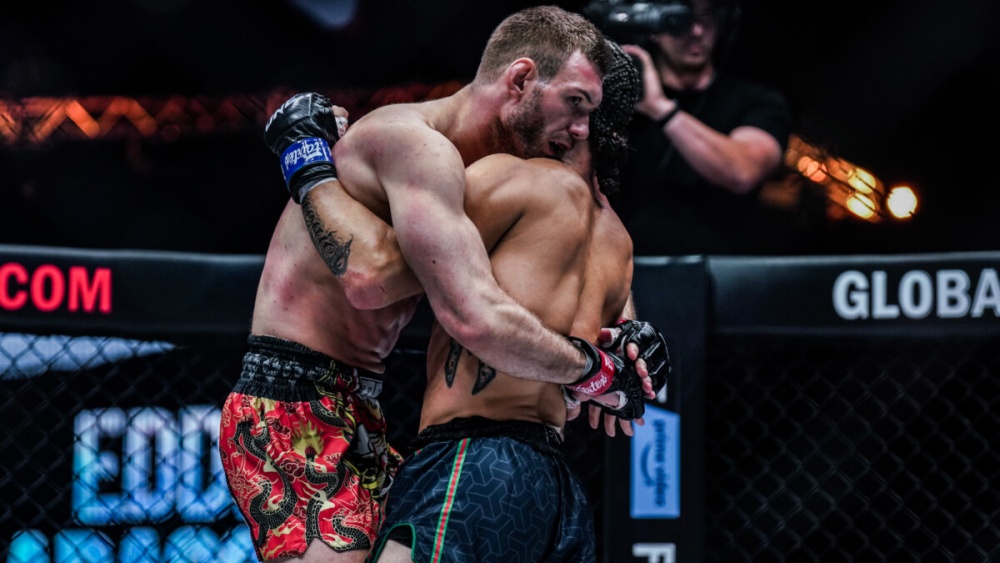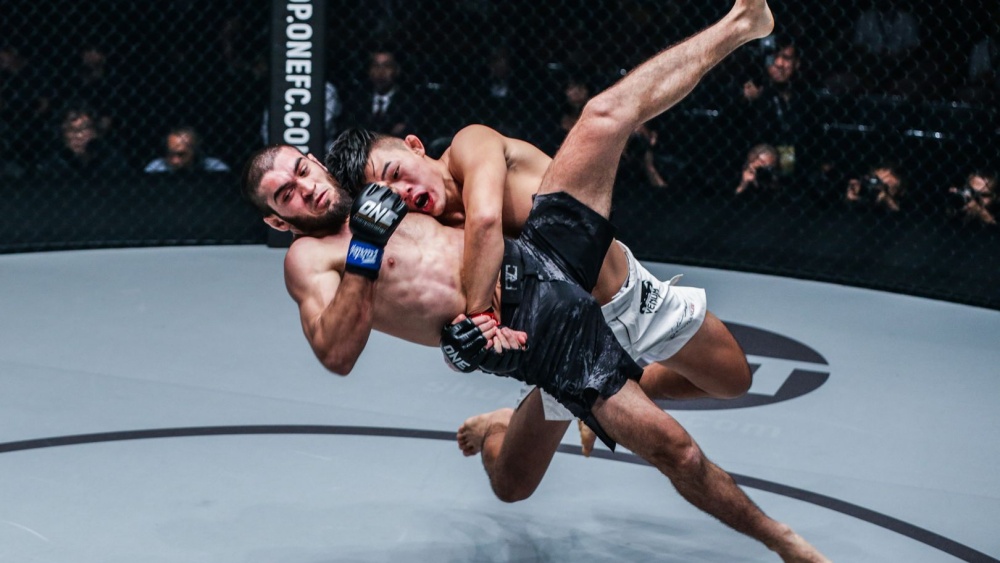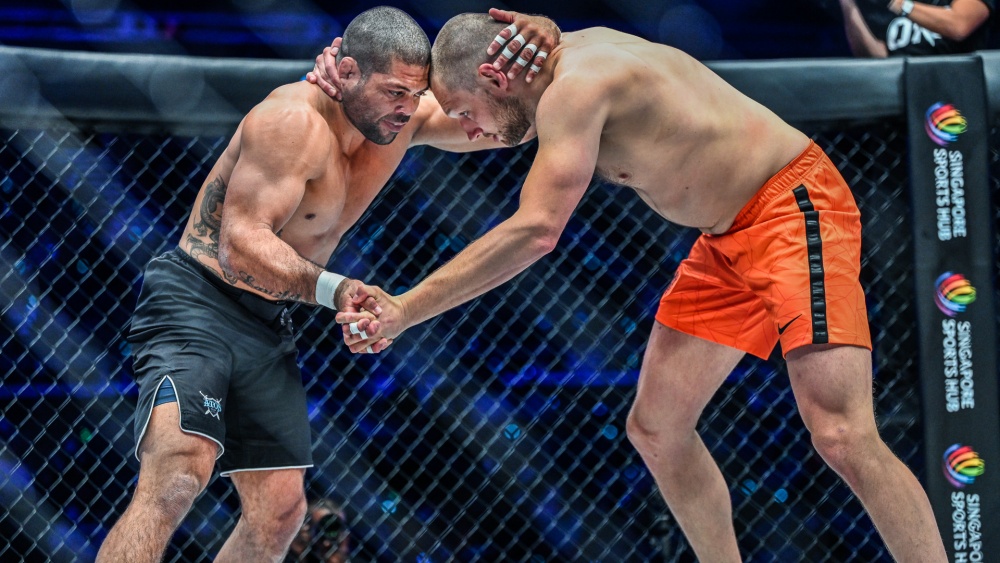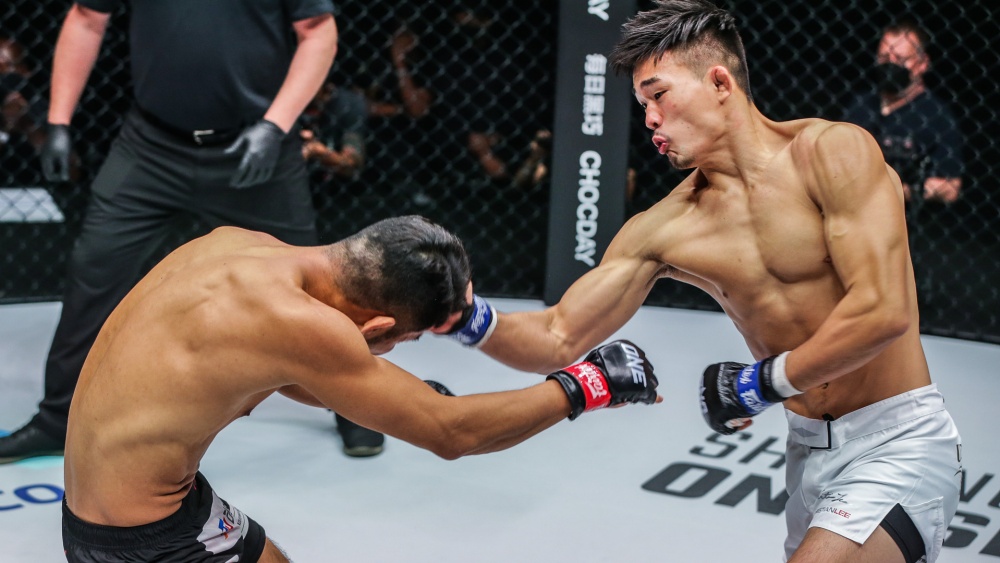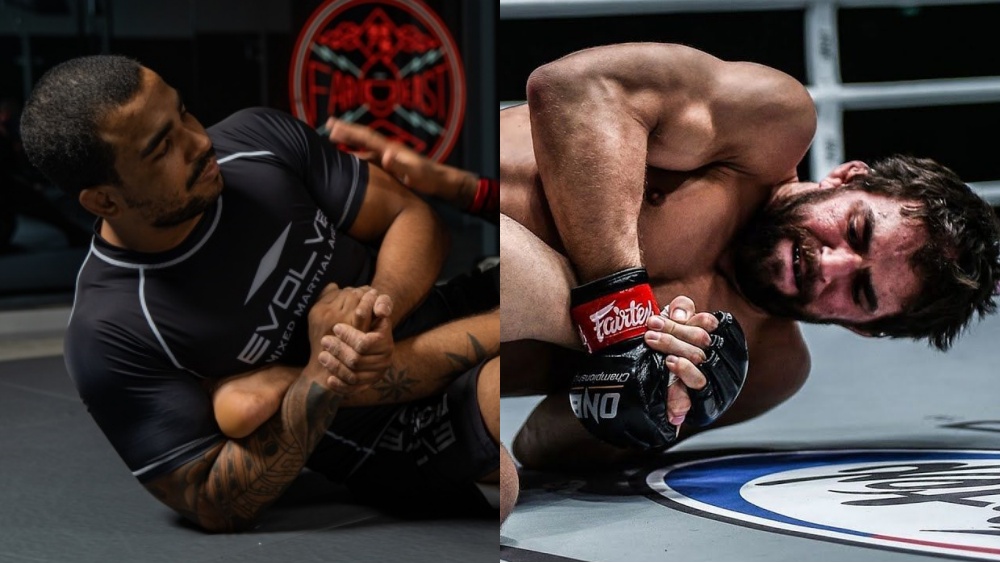Attacking and defending from different angles is a key aspect of MMA. When two fighters square off, they are in a fifty-fifty situation, with both of their centerlines facing each other. This leaves both fighters in the direct path of any straight strikes and often leads to a brawl. While entertaining for the audience, this leaves both fighters vulnerable to more damage, both short and long-term. Creating angles before attacking, and creating angles while defending, turns a brawl into a physical game of chess. Much like Brazilian Jiu Jitsu, taking a dominant position before attacking creates more success overall. Today, Evolve Daily is pleased to share a guide on how to create angles for MMA.
1) Stance
Your fighting stance is the foundation of your fighting style. There are many variations and types of fighting stances; effective strikers choose a stance that suits their physical attributes as well as their fighting style. A basic striking stance for MMA will have your feet approximately shoulder width apart, with your dominant side in the rear. Your rear heel and big toe on your lead foot should be in line with each other, with your body bladed approximately forty-five degrees. This line represents your centerline, an important concept to keep in mind when creating angles. The weight distribution should be even between both legs, with slightly more weight on the rear side. Avoid putting the majority of your weight on your front leg, as this limits your lateral movement.
As you gain more experience, you will adjust your stance to best fit your individual fighting style. The importance of developing a solid, efficient stance cannot be overstated. Creating angles, and the footwork needed for it, all come out of your fighting stance. These are videos on finding your fighting stance in MMA. The first is by former UFC fighter Kajan Johnson and the second one features Coach Trevor Wittman and current UFC fighter Justin Gaethje.
2) Footwork
Clean, efficient footwork is an essential aspect of creating angles. Before attempting to angle off, you must be able to synchronize your punches with your feet. Movement in combat sports is the opposite of how we walk as humans; this just means that training is required in order to become comfortable with it. In combat sports, including MMA, you want to step with the same side foot as you are punching with. This means when you throw a jab, you step with your lead foot, and when you throw a cross, you step with your rear foot. Although simple in concept, this can be difficult to execute while dealing with the pressures of a live fight or even sparring.
One drill to help you synchronize your punches with your feet is a simple line drill where you walk with your punches. Move forward and backwards along an imaginary line while you throw jabs and crosses. As you throw your jab, your lead foot will step forward. As you throw your cross, your rear foot will step forward. To throw a jab going backwards, step with your rear foot first and throw the jab as your lead foot steps backwards. Coach Trevor Wittman and Justin Gaethje explain and demonstrate this drill in the video above.
A more advanced progression of this drill incorporates a slip rope. You can easily set this up at home by using hand wraps or a length of wire hung in a straight line just above your shoulder height. Start with the slip line on either side, just outside your shoulder and glove. Practice throwing combinations while stepping forward or backward, then using your feet to roll under the slip line. The slip line represents an opponent’s straight punches; drilling movement after you throw your combinations will make you especially difficult to hit. Be sure to keep a tight high guard as you throw your punches and roll under the slip line. Above is a video of Coach Trevor Wittman and Justin Gaethje demonstrating how to use the slip line.
Once you are comfortable with basic footwork, you can begin to incorporate more advanced steps like Yodkhunpon Sittraiphum’s galloping step. Although this type of footwork is more commonly seen in Muay Thai and Kickboxing, it can be equally as effective in MMA when applied intelligently. The gallop starts with you stepping forward with your lead leg, then gliding your rear leg to follow. As your rear leg glides forward, you can skip forward with your lead leg. This type of footwork is effective for pressuring your opponents and closing or creating distance quickly. Yodkhunpon demonstrates his galloping footwork in the video above.
Regardless of the footwork patterns you choose to incorporate, the goal is to get off of your opponent’s centerline, which puts you outside the range of the majority of their attacks. The term taking an angle refers to any type of footwork that lets you get off of your opponent’s centerline while maintaining yours.
3) Punching
While the footwork patterns discussed above are essential for creating angles, no opponent will let you take or maintain those angles without a fight. Using your punches as distractions can be an effective way to create angles without your opponent even knowing! An example of this is stepping and slipping to your right while throwing a rear uppercut, followed by a lead hook to create an angle. If your opponent doesn’t adjust their feet and hips to face you at your new position, your cross will land before theirs can, even if you both throw your respective punches simultaneously. This is due to your opponent’s centerline not facing you, while yours does.
4) Kicking
Kicking is another effective way for you to create angles on your opponent. Landing a body kick will effectively freeze your opponent in place, allowing you to take an angle as you retract your kicking leg. For example, you can throw your right roundhouse kick to your opponent’s body. After you land the kick, retract your leg halfway while pushing off your left foot towards your right side. This will result in you landing in your stance facing your opponent from the side without telegraphing your movement. From this position, you are able to follow up with strikes or a takedown, while your opponent has to turn to face you.
Low kicks are also effective strikes when creating angles. Landing a few hard low kicks to your opponent’s thighs will slow down their movement. The more damage you can inflict to their legs, the more their movement will slow down. The calf kick is especially useful for this, as the calf is a much smaller muscle than the quadriceps. Although full-power low kicks will do the most damage, your opponent will start to check or evade your kicks after taking one. Instead of attempting more full-power kicks, increase the speed of your kicks by removing the hip turnover and chamber when you strike. Although this may seem counterintuitive, some of the best low kickers in Muay Thai and Kickboxing have utilized this style of low kick, often called the setup lowkick, to great effect. Above are the videos explaining how to setup low kicks and using calf kicks in MMA.
Once you are comfortable with the setup low kick, you can use it as a feint to close distance or angle off to one side. This is called a rear hip feint and can be seen in the fighting styles of fighters such as Israel Adesanya, Alexander Volkanovski, and Brad Riddel. City Kickboxing, an MMA gym in New Zealand, heavily incorporates these types of feints in their style. Above is a video of Brad Riddell explaining how to perform the rear hip feint.
Conclusion
Creating angles is key for any fighter to land their strikes without being hit in return. To become proficient in creating angles, drill fundamentals, and the above techniques until they become second nature. Try using the concepts discussed to create angles in your next sparring session!
You may also like:
20 Advanced MMA Striking Set-Ups And Combinations You Should Add To Your Arsenal
